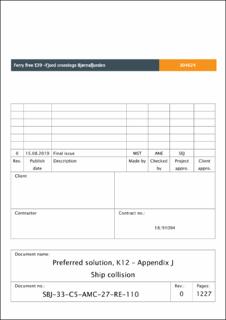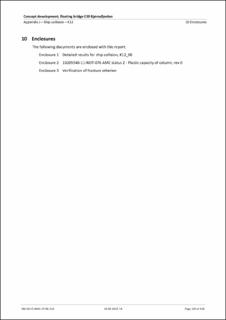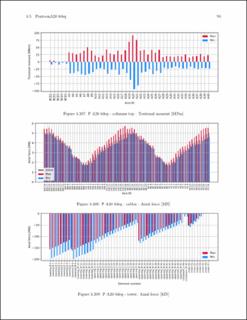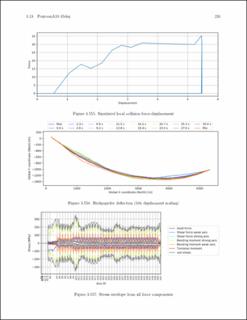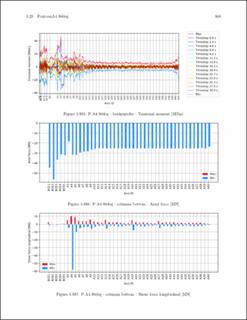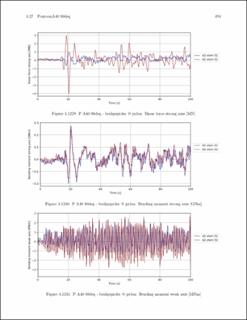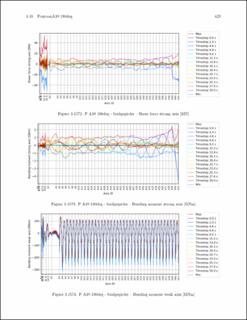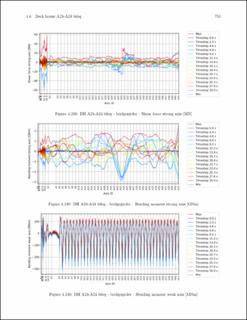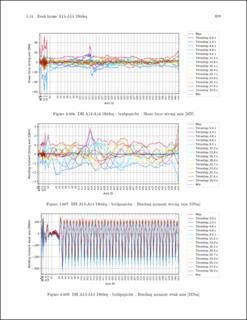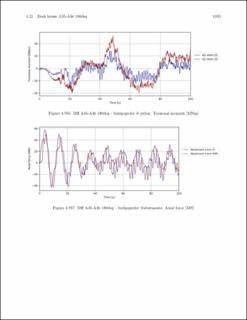| dc.contributor.author | Statens vegvesen | |
| dc.contributor.author | MST | |
| dc.coverage.spatial | Norway, E39 Bjørnafjorden | en_US |
| dc.date.accessioned | 2020-06-30T09:44:47Z | |
| dc.date.available | 2020-06-30T09:44:47Z | |
| dc.date.issued | 2019-08-15 | |
| dc.identifier.uri | https://hdl.handle.net/11250/2660035 | |
| dc.description.abstract | This report describes the status of ship collision analyses in the concept development work of a floating bridge over Bjørnafjorden. Both global and local effects are considered. The only damping sources that gives a significant contributionto the bridge response following an impact are viscous damping on pontoons and mooring lines, causing an improved response with more mooring. Comparison of global behavior in OrcaFlex and LS-DYNA reveal similar but not identical responses.
Local response was evaluated based on nonlinear finite element models with verified state-of-the-art material models following recommended guidelines for local response simulations. The resistance and resulting damage were investigated for pontoon, column and bridge girder. The most severe damage to the bridge occurs in the pontoons and columns.
Pontoon damage is acceptable in the sense of flooded volume whereas column damage is more challenging. Deckhouse collisions to the bridge girder was found to cause limited damage to the bridge girder itself. The bridge is compliant in the transverse direction, and pontoon impacts will yield increasing local deformation for increasing deviation in impact direction from the transverse direction. Up to 200 MJ is to be dissipated locally for the worst conditions, indicating significant damage to both pontoon and vessel. For pontoon collisions the energy dissipation through local plastic deformations are in the range of 40% of available kinetic energy for head-on, 60% for 45 degree offset and 80% for 80 degree offset, where offset is the angle from the bridge transverse axis (longest pontoon axis). Deckhouse collisions are not significantly different for head-on collision (0 deg) and at an angle (10 deg) in terms of energy dissipation. Mooring contributes significantly to energy dissipation, and a stronger decay of response is observed with more mooring lines. This does however not affect peak responses significantly, as the northern and southern end of the bridge are stiffnessdominated.
Pontoon collision and deckhouse collision cause a somewhat different response, with pontoon collisions giving higher torsional response in the bridge girder and deckhouse collisions a larger strong-axis bending moment response towards either end. For pontoon collisions the strong-axis bending moment is stiffness-dominated close to either end of the bridge, and there are only minor concept differences. For deckhouse collisions the southern scenarios are further out on the bridge, and the mooring stiffness contributes significantly to reduce peak loads towards the southern end. In the north high loads are observed for all concepts.
The bridge girder capacity is sufficient to avoid severe consequences of damage and has shown to be robust in the postdamage phase (see [1]). However, the torsional resistance of the columns (for all pontoons, all concepts) will be dimensioned by ship collisions and should be a point of focus in further design development. If the ship impact energy is reduced compared to the current level in the upcoming risk analysis a column with stiffness equal to the narrow column geometry with 40 mm plate thickness is enough to have a reasonable but high plastic utilization of the column. However, if the impact energy is not reduced it is recommended to introduce a slight increase in the torsional resistance and to include stiffening members that behave well in a scenario with torsional deformation. | en_US |
| dc.description.sponsorship | Statens vegvesen Vegdirektoratet | en_US |
| dc.language.iso | eng | en_US |
| dc.publisher | Statens vegvesen | en_US |
| dc.relation.ispartofseries | Statens vegvesens rapporter; | |
| dc.rights | Attribution-NoDerivatives 4.0 Internasjonal | * |
| dc.rights.uri | http://creativecommons.org/licenses/by-nd/4.0/deed.no | * |
| dc.subject | Statens vegvesen Vegdirektoratet | en_US |
| dc.subject | E39 Bjørnafjorden | en_US |
| dc.subject | SBJ-33-C5-AMC-27-RE-110 | en_US |
| dc.title | Preferred solution, K12 – Appendix J - Ship collision | en_US |
| dc.type | Report | en_US |
| dc.source.pagenumber | 1227 | en_US |
